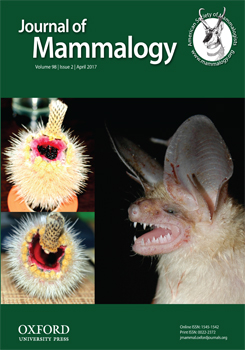Seasonal reliance on plant-based resources is very uncommon in temperate insectivorous bats. The pallid bat (Antrozous pallidus) is an exception and in the Sonoran Desert switches from an arthropod-based diet to one that includes cactus nectar during spring when columnar cacti bloom. Such cactophily is a common strategy among nectar-feeding phyllostomid bats, including migratory Leptonycteris species that consume nectar and fruit from columnar cacti. Spring nectarivory by A. pallidus begs the question of whether they also consume cactus fruit during the summer, despite lacking morphological and physiological adaptations for frugivory. We recorded foraging behavior of bats at 134 fruits of the cardón cactus (Pachycereus pringlei) in Baja California Sur, Mexico, and used stable isotope analysis to quantify incorporation of fruit into the summer diet of A. pallidus. We found that A. pallidus visited cardón fruits just as frequently as the lesser long-nosed bat, Leptonycteris yerbabuenae (51.0% and 49.0% of total observed visits, respectively), and removed the same amount of fruit (t59 = –0.85, P = 0.40). Carbon isotopes in wing tissue (n = 37) and exhaled breath (n = 35) of A. pallidus were consistent with frugivory, although variability in the proportion of cactus-derived δ13C in A. pallidus was higher in summer than in spring. Our results confirm that nectarivory in A. pallidus extends to frugivory, highlighting remarkable dietary plasticity in a temperate bat. Moreover, these data suggest that A. pallidus may be an important mutualist to columnar cacti in parts of the Sonoran Desert.
How to translate text using browser tools
2 January 2017
Using behavioral and stable isotope data to quantify rare dietary plasticity in a temperate bat
Jaclyn R. Aliperti,
Douglas A. Kelt,
Paul A. Heady III,
Winifred F. Frick
ACCESS THE FULL ARTICLE

Journal of Mammalogy
Vol. 98 • No. 2
April 2017
Vol. 98 • No. 2
April 2017




